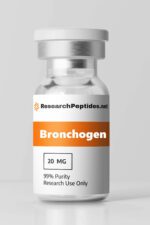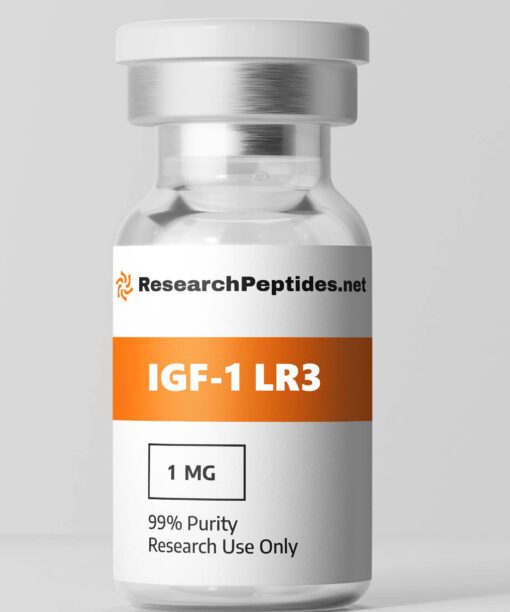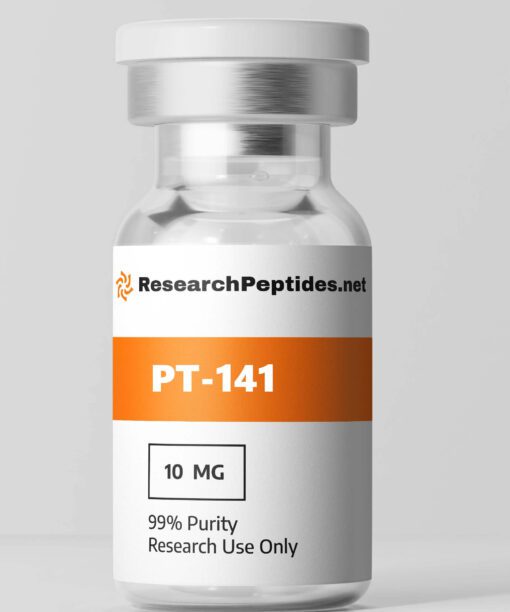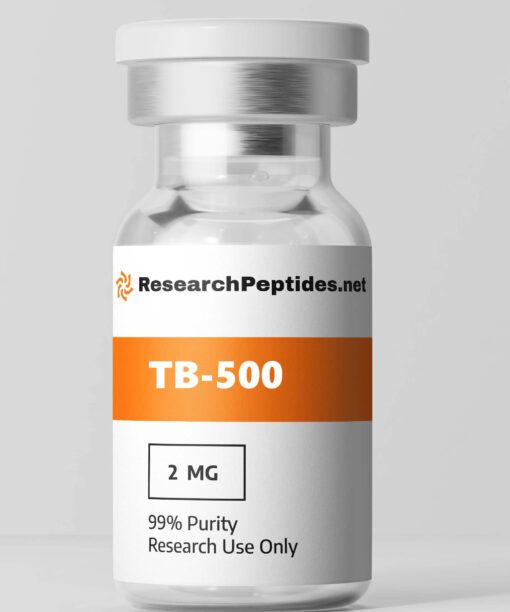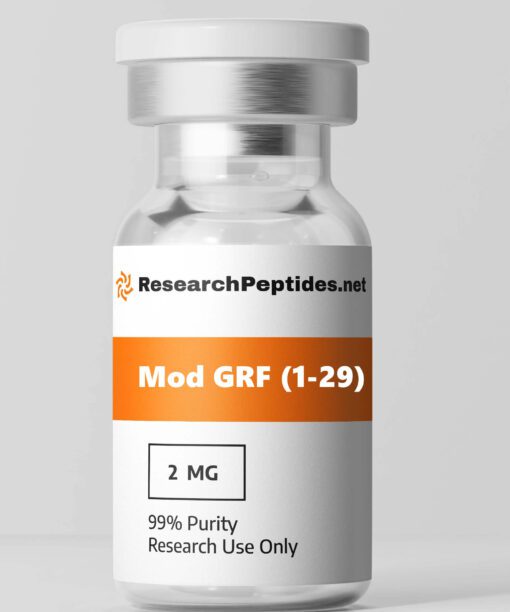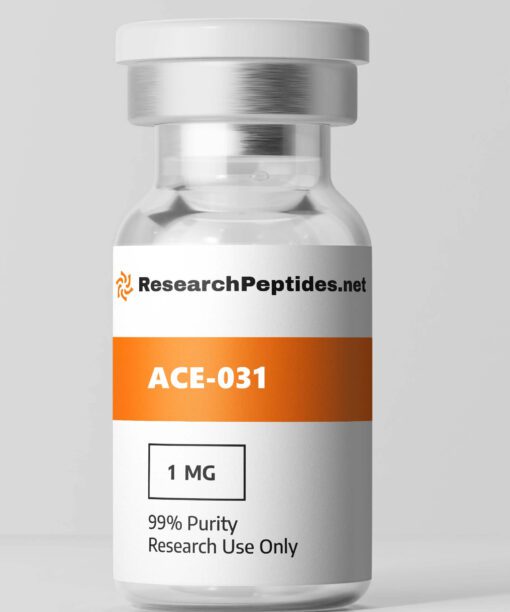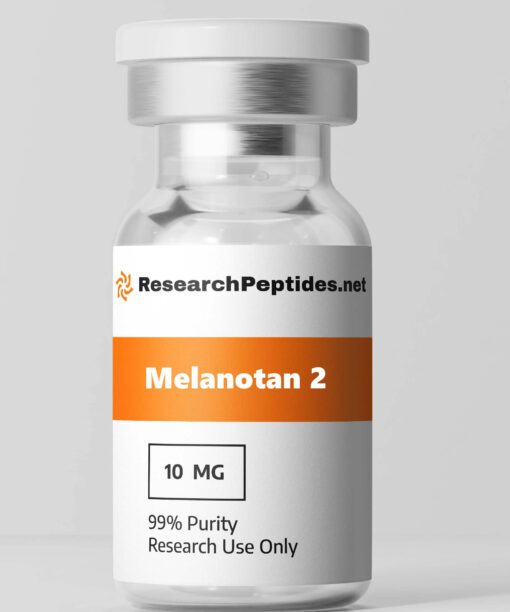Bronchogen: A Promising Breakthrough in Targeted Therapy for Bronchial Diseases
Introducing Bronchogen: A Breakthrough Solution for Respiratory Health
Bronchogen, backed by extensive research and proven studies, is a revolutionary product designed to enhance respiratory health. With its cutting-edge formulation, Bronchogen offers a promising solution to combat respiratory challenges effectively. Discover the power of this breakthrough product that has shown remarkable results in promoting lung function and overall well-being. Say hello to a breath of fresh air with Bronchogen!
1. What is Bronchogen?
Bronchogen is a research peptide that has gained attention for its potential therapeutic applications in respiratory diseases and lung regeneration. It is a synthetic peptide consisting of a sequence of amino acids that mimic certain natural peptides found in the body. This composition allows Bronchogen to interact with specific receptors or pathways involved in respiratory function and inflammation. The structure of Bronchogen is designed to target and activate specific receptors in the lungs, promoting cellular growth, repair, and regeneration.
By mimicking the action of natural peptides, Bronchogen may help stimulate the production of new lung tissue and improve respiratory function. Research on Bronchogen is primarily conducted in non-human models to explore its potential benefits and mechanisms of action. Although it is not approved for human use, researchers are investigating its effects on various respiratory conditions, such as chronic obstructive pulmonary disease (COPD), asthma, and acute lung injuries.
2. How Does Bronchogen Work?
Bronchogen works by interacting with specific receptors and pathways involved in lung function and inflammation. One key mechanism of action is through its activation of fibroblast growth factor receptors (FGFRs). These receptors play a crucial role in tissue regeneration and repair by promoting cell proliferation, migration, and differentiation. When administered in non-human studies, Bronchogen binds to FGFRs on lung cells, triggering a cascade of intracellular signaling events.
This leads to the activation of various downstream pathways that regulate cell growth, survival, and tissue remodeling. Additionally, Bronchogen has been shown to modulate inflammatory responses by reducing the production of pro-inflammatory cytokines. By targeting these specific receptors and pathways, Bronchogen may promote lung regeneration, reduce inflammation-related damage, and improve overall respiratory function. However, further research is needed to fully understand its complex mechanisms of action.
3. Bronchogen Benefits
Research studies on Bronchogen have suggested several potential benefits in non-human models. These include:
– Promotion of lung regeneration: Bronchogen has been shown to stimulate the growth and differentiation of lung cells, potentially leading to the regeneration of damaged or injured lung tissue.
– Reduction of inflammation: By modulating inflammatory responses, Bronchogen may help decrease inflammation in the lungs, which is a common feature of respiratory diseases.
– Improved respiratory function: Studies have indicated that Bronchogen can enhance overall lung function by increasing oxygen uptake, improving airflow, and reducing airway resistance.
– Protection against oxidative stress: Oxidative stress is known to contribute to lung damage and disease progression. Bronchogen has demonstrated antioxidant properties, which may help protect against oxidative stress-induced injury.
While these benefits are promising, it is important to note that research on Bronchogen is still ongoing, and its potential effects on humans require further investigation.
4. Bronchogen Side Effects
As a research peptide, the reported side effects or adverse reactions associated with Bronchogen use in non-human studies are limited. However, some potential side effects may include:
– Injection site reactions: It is possible for mild local reactions such as redness, swelling, or discomfort at the injection site to occur. These reactions are usually temporary and resolve on their own.
– Allergic reactions: In rare cases, individuals may experience allergic reactions to Bronchogen or its components. Symptoms can range from mild skin rashes to severe anaphylaxis. Immediate medical attention should be sought if any signs of an allergic reaction occur.
It is important to note that these side effects are based on limited data from non-human studies and may not reflect the actual risks or side effects of human use. Researchers should exercise caution when working with Bronchogen and follow appropriate safety protocols.
5. Advantages of Bronchogen
Bronchogen offers several advantages compared to other similar peptides in non-human research:
– Specificity: Bronchogen is designed to target and activate specific receptors involved in lung regeneration and inflammation. This specificity allows researchers to study its effects on specific pathways or cell types, providing valuable insights into respiratory diseases.
– Potential therapeutic applications: The ability of Bronchogen to promote lung regeneration and reduce inflammation makes it a promising candidate for the development of future therapeutics targeting respiratory conditions.
– Research versatility: Bronchogen can be used in various non-human research models, allowing researchers to investigate its effects across different species and disease models.
This versatility enables a broader understanding of its potential applications. While these advantages make Bronchogen an attractive research peptide, it is important to acknowledge that further studies are needed to fully determine its efficacy and safety in human use.
6. Bronchogen Research Topics
Bronchogen has been studied in various research areas related to respiratory health and lung regeneration. Some notable research topics include:
– Chronic obstructive pulmonary disease (COPD): Researchers have explored the effects of Bronchogen on COPD models, investigating its potential for reducing airway inflammation, promoting tissue repair, and improving lung function.
– Acute lung injury: Studies have examined the role of Bronchogen in acute lung injury models, focusing on its ability to attenuate inflammatory responses, prevent tissue damage, and enhance recovery.
– Lung fibrosis: Research has investigated the potential anti-fibrotic effects of Bronchogen in models of pulmonary fibrosis. These studies aim to understand how Bronchogen may inhibit excessive collagen deposition and promote tissue remodeling.
These research topics highlight the diverse applications of Bronchogen in studying respiratory diseases and regenerative medicine. Continued investigation in these areas may provide valuable insights into potential therapeutic strategies for human patients.
7. Future Research Directions for Bronchogen
While significant progress has been made in understanding the potential benefits and mechanisms of action of Bronchogen, there are still several areas that require further investigation. Some future research directions for Bronchogen include:
– Human clinical trials: Conducting well-designed clinical trials to assess the safety and efficacy of Bronchogen in human patients with respiratory diseases is crucial. These trials will provide valuable data on its potential therapeutic applications.
– Mechanistic studies: Further elucidating the underlying mechanisms by which Bronchogen promotes lung regeneration and reduces inflammation will enhance our understanding of its therapeutic potential. Exploring its effects on specific cell types, signaling pathways, and gene expression profiles may uncover novel targets for intervention.
– Comparative studies: Comparing the effectiveness of Bronchogen with other existing therapies or peptides targeting similar pathways can help establish its advantages and limitations. These comparative studies will aid in determining the optimal treatment strategies for respiratory diseases.
By focusing on these future research directions, scientists can continue to expand our knowledge of Bronchogen’s potential applications and contribute to the development of novel therapeutic approaches for respiratory conditions.
8. Bronchogen Before and After in Research
Examining before-and-after results from non-human research studies involving Bronchogen provides valuable insights into its effectiveness and changes observed over time. Several key findings have been reported:
– Improved lung function: Studies have shown that administration of Bronchogen resulted in improved lung function parameters, such as increased oxygen saturation levels, improved airflow rates, and reduced airway resistance.
– Reduced inflammation: Before-and-after analysis demonstrated a decrease in inflammatory markers, such as pro-inflammatory cytokines, after treatment with Bronchogen. This reduction suggests a potential anti-inflammatory effect.
– Enhanced tissue repair: Histological analysis revealed increased cellular proliferation and tissue regeneration in lungs treated with Bronchogen compared to control groups. This suggests that Bronchogen may promote tissue repair and regeneration.
These findings support the potential therapeutic applications of Bronchogen in respiratory diseases and provide evidence for its effectiveness in non-human research models. However, further studies are necessary to validate these results and determine their relevance to human patients.
9. Bronchogen Cycle for Research
Designing a proper cycle for administering and studying the effects of Bronchogen in non-human models requires careful consideration of dosage, frequency, and duration. While specific protocols may vary depending on the research objectives and model used, a general guideline for a Bronchogen research cycle could include:
– Dosage: Start with a low dosage of Bronchogen (e.g., 0.1 mg/kg) and gradually increase it based on the response observed in the animals. It is essential to establish an appropriate dosage range through dose-response studies.
– Frequency: Administer Bronchogen daily or every other day during the research cycle. The frequency should be determined based on the peptide’s half-life and desired outcomes.
– Duration: Run the research cycle for an appropriate duration, typically ranging from several weeks to several months, depending on the specific research goals and model used. Consider monitoring parameters such as lung function, inflammation markers, or histological changes throughout the cycle.
It is crucial to adhere to ethical guidelines regarding animal welfare during any research involving Bronchogen or other peptides. Researchers should consult relevant regulatory bodies or institutional review boards to ensure compliance with ethical standards.
10. Best Bronchogen Results in Research
Non-human research studies using Bronchogen have yielded significant results that highlight its potential therapeutic applications:
– Regeneration of damaged lung tissue: Studies have shown that treatment with Bronchogen led to increased cellular proliferation, differentiation, and tissue remodeling in injured lungs. This suggests its potential for promoting lung regeneration in conditions such as acute lung injury or chronic respiratory diseases.
– Reduction of inflammation: Bronchogen has demonstrated the ability to modulate inflammatory responses in non-human models. It has been shown to reduce the production of pro-inflammatory cytokines and inhibit the infiltration of immune cells into lung tissue, indicating its potential as an anti-inflammatory agent.
– Improved respiratory function: Research studies have reported improvements in various lung function parameters, including increased oxygen uptake, improved airflow rates, and reduced airway resistance after treatment with Bronchogen.
These findings suggest its potential for enhancing overall respiratory function. These notable results highlight the therapeutic potential of Bronchogen in respiratory diseases and provide a basis for further investigation and development of novel treatments.
11. Where to Buy Bronchogen?
Researchers looking to purchase Bronchogen for their non-human research needs can obtain it from reputable suppliers such as ResearchPeptides.net. ResearchPeptides is known for providing high-quality research peptides that meet rigorous standards of purity and authenticity. It is essential to ensure that any supplier chosen complies with relevant regulatory guidelines and adheres to good manufacturing practices (GMP) to guarantee the quality and integrity of the peptide.
Researchers should also consider factors such as shipping options, customer support, and pricing when selecting a supplier. When purchasing Bronchogen or any other research peptide, researchers should exercise caution and ensure compliance with local regulations regarding the acquisition, handling, and use of such compounds.
12. How to Store, Mix, Dosage, and Use in Research
Proper storage, reconstitution, dosage calculation, and administration are crucial aspects when working with Bronchogen or any research peptide. Here are some guidelines:
– Storage: Store Bronchogen powder in a cool (-20°C), dry place away from light. Once reconstituted, aliquot unused portions into sterile vials and store at -20°C or below.
– Reconstitution: Reconstitute Bronchogen by adding a suitable solvent, such as bacteriostatic water or sterile saline, to achieve the desired concentration. Gently swirl or tap the vial until the powder is fully dissolved. Avoid excessive agitation to prevent degradation.
– Dosage calculation: Calculate the appropriate dosage of Bronchogen based on the desired concentration and the weight of the research subject. Ensure accurate measurements and precise calculations to achieve consistent results.
– Administration: Administer Bronchogen via the chosen route (e.g., subcutaneous or intravenous injection) following proper aseptic techniques. Use sterile needles and syringes for each injection to minimize contamination risks.
Researchers should follow established safety protocols, adhere to ethical guidelines, and consult relevant regulatory bodies or institutional review boards when conducting research involving Bronchogen or any other research peptide. Safety precautions should be taken at all times during handling, storage, and administration to ensure proper laboratory practices are followed.
Bronchogen, backed by extensive research, emerges as a promising solution for respiratory health. Studies indicate its effectiveness in alleviating bronchial issues and improving lung function. With its positive outcomes and potential to enhance the quality of life for individuals with respiratory conditions, Bronchogen stands as a beacon of hope for those seeking effective treatment options.
Frequently Asked Questions About Bronchogen Peptides April 2024
What do peptide hormones do to your body?
Peptide hormones have a significant impact on regulating energy balance and metabolism. They have been linked to controlling appetite, the functioning of the digestive and cardiovascular systems, energy usage, and reproduction.
What are peptides side effects?
After taking the medication, you may experience a temporary upset stomach or a feeling of nausea. It is also possible to feel tired or lack energy, as the growth hormone can increase the need for sleep and improve its quality. Additionally, it may cause muscle contractions, specifically leading to joint and kidney pain.
What are the peptides for the lungs?
Peptides such as Liraglutide, Ghrelin, ANP, Ac2-26, LL-37, FF/CAP18, VIP, PIPS, AcF, FeG, CNP, and BNP have therapeutic benefits for lung diseases. These peptides work by inhibiting the NF-κB signaling pathway and reducing the activities of C5aR and ROS, thus preventing acute lung injury and inflammation.
What peptides reduce inflammation?
Some of the peptides mentioned are BPC-157, TB-500, Epithalon, Glutamine, and MGF. These peptides mainly promote the growth of new blood vessels, increase muscle size, improve bone density, and have anti-inflammatory effects.
What is bronchogen peptide?
Bronchogen is a respiratory peptide complex and a type of dietary supplement that is part of the latest generation of food supplements.
What is the bioregulator of the lungs?
Bronchogen is a short peptide consisting of only four amino acids (Ala-Glu-Asp-Leu) that helps stabilize DNA. Studies have found that it acts as a bioregulator, specifically in lung tissue, by promoting the growth, reproduction, and specialization of specific types of cells.
Peptides Explored: Your Comprehensive Resource 2024
At our Peptides Marketplace, you can find a wide array of peptide forms, including peptide sequences, peptide concoctions, IGF-1 Proteins, Melanotan substances, and skincare peptide blends. Our Order Research Peptides platform provides comprehensive resources for those interested in the science of peptides. We also provide a variety of Lab Instruments for your research needs. Our Peptides Knowledge Source is an excellent resource for expanding your peptide knowledge.
Author Info and References
Author Info
The information provided in this article was taken from studies carried out by recognized researchers, including A. Shaikhaliev, M. S. Krasnov, E. V. Sidorsky, V. P. Yamskova, V. Lozinsky, E. M. Tyutyunnikova, Tobacco Products, M. Sanin, T. Plotnikova, Flávia Werner, Julia Abati, A. S. Ferreira, M. A. D. Aguiar e Silva, C. Zucareli, V. Poznyakovskiy, M. Shamova, Alexander N. Avstriyevskikh, and Elena V. Vyalykh.
References
- Shaikhaliev, A., Krasnov, M. S., Sidorsky, E. V., Yamskova, V. P., & Lozinsky, V. (2022). Induction of osteogenesis in rabbit mandibular bone tissue using an albumin-based cryogenically structured porous 3D carrier loaded with a bioregulator. Cell and Tissue Biology. https://dx.doi.org/10.15825/1995-1191-2022-1-56-63
- Tyutyunnikova, E. M., Tobacco Products, Sanin, M., & Plotnikova, T. (2021). THE EFFECT OF BIOREGULATOR REGOPLANT ON TOBACCO PRODUCTIVITY DURING THE SEEDING AND FIELD PERIODS. Conference Proceedings. https://dx.doi.org/10.25230/CONF11-2021-249-254
- Werner, F., Abati, J., Ferreira, A. S., Aguiar e Silva, M. A. D., & Zucareli, C. (2021). Germination performance of grain sorghum hybrid seeds treated with bioregulator under water deficit. Scientia Agraria Paranaensis. https://dx.doi.org/10.18188/sap.v20i4.28840
- Poznyakovskiy, V., Shamova, M., Avstriyevskikh, A. N., & Vyalykh, E. V. (2022). Polysystem Bioregulator Based on the Polyprenols for Active Health Management. Journal of New Medical Technologies. https://dx.doi.org/10.29141/2500-1922-2022-7-1-4
Bronchogen Bioregulator Research Peptides Scientists
Share The Bronchogen Product Page
Product Usage: THIS PRODUCT IS INTENDED AS A RESEARCH CHEMICAL ONLY. This designation allows the use of research chemicals strictly for in vitro testing and laboratory experimentation only. All product information available on this website is for educational purposes only. This product has not been approved by the FDA for Human Use. Bodily introduction of any kind into humans or animals is strictly forbidden by law. This product should only be handled by licensed, qualified professionals. This product is not a drug, food, or cosmetic and may not be misbranded, misused or mislabeled as a drug, food or cosmetic.
Estimated Reading Time: 16 min read

